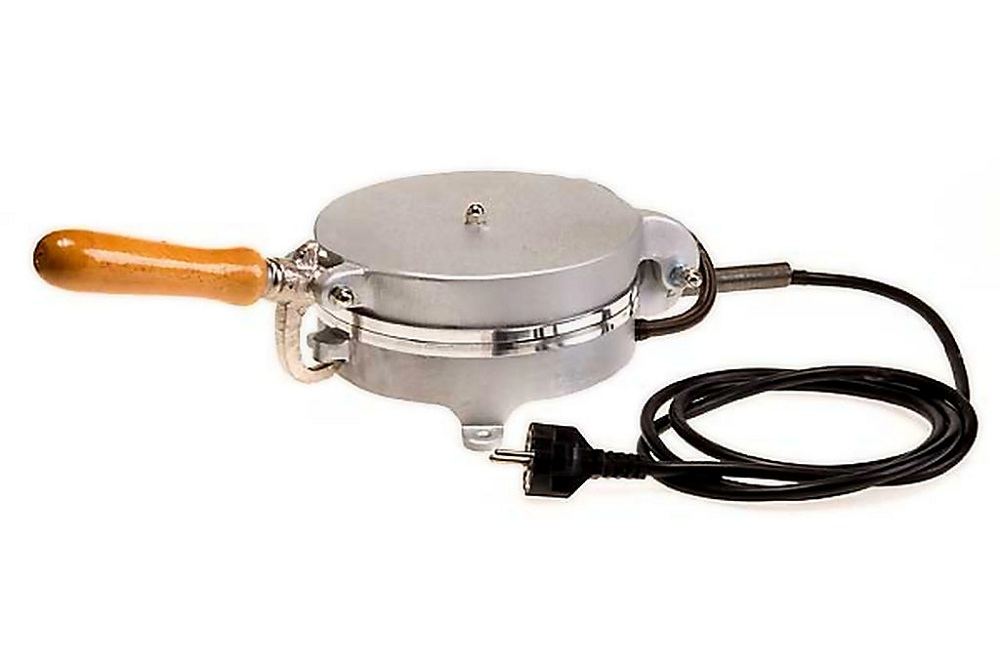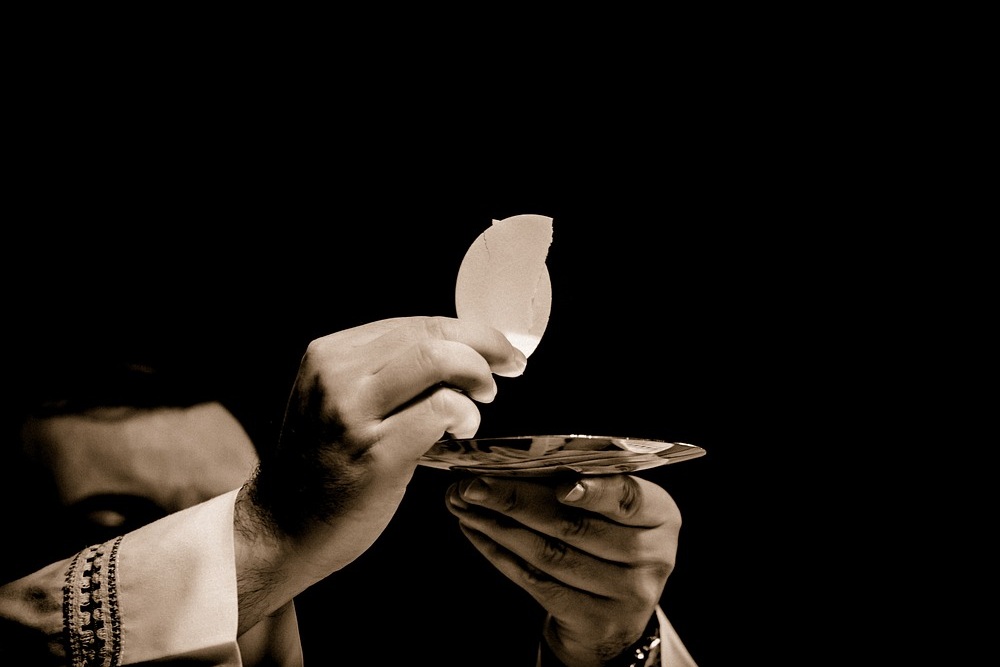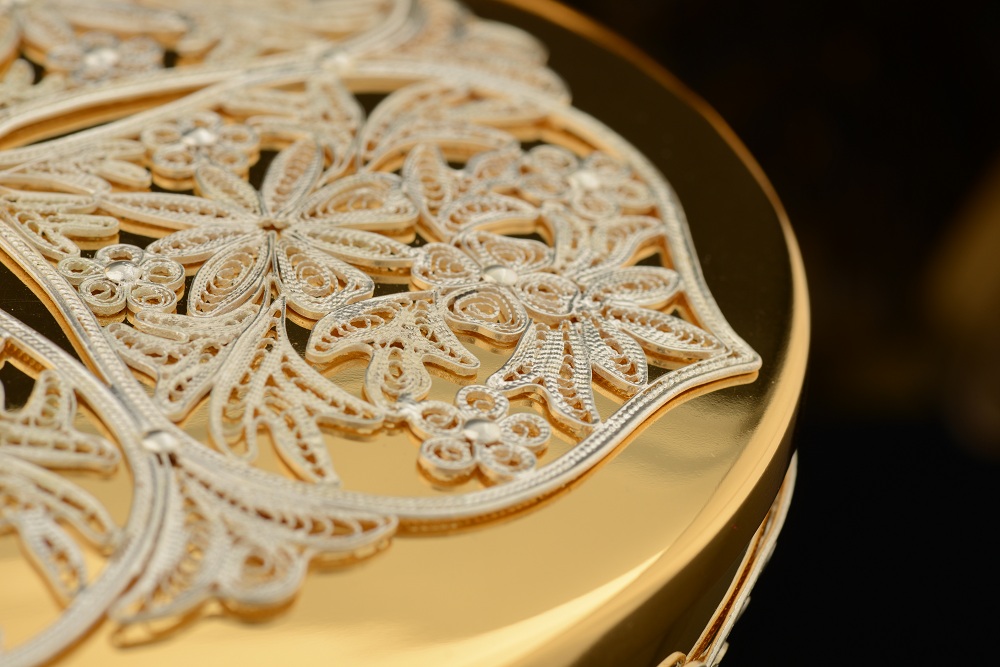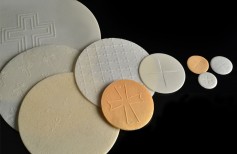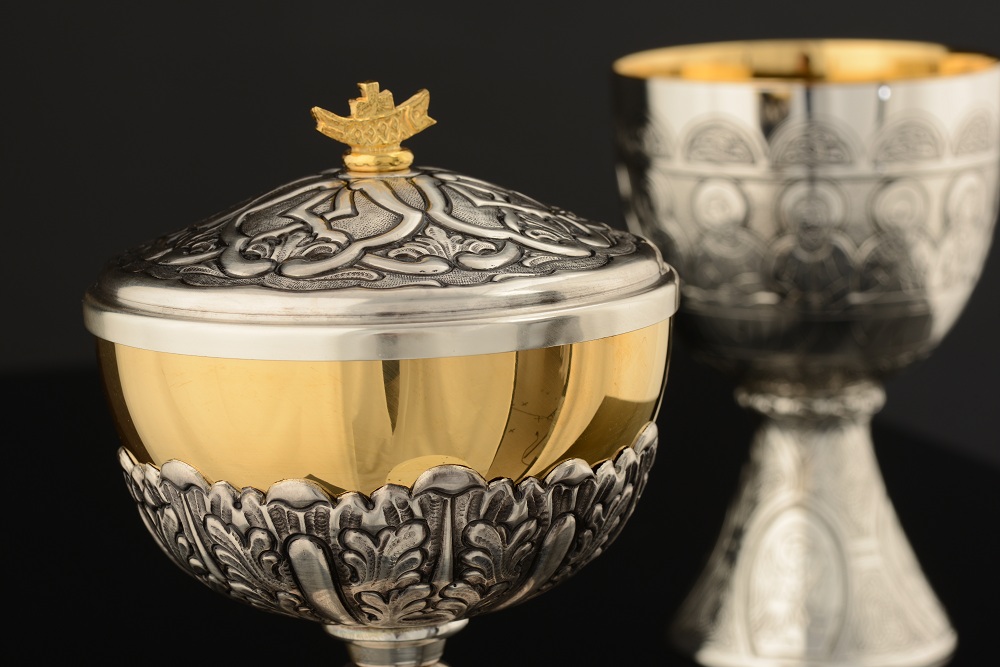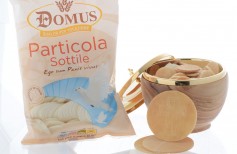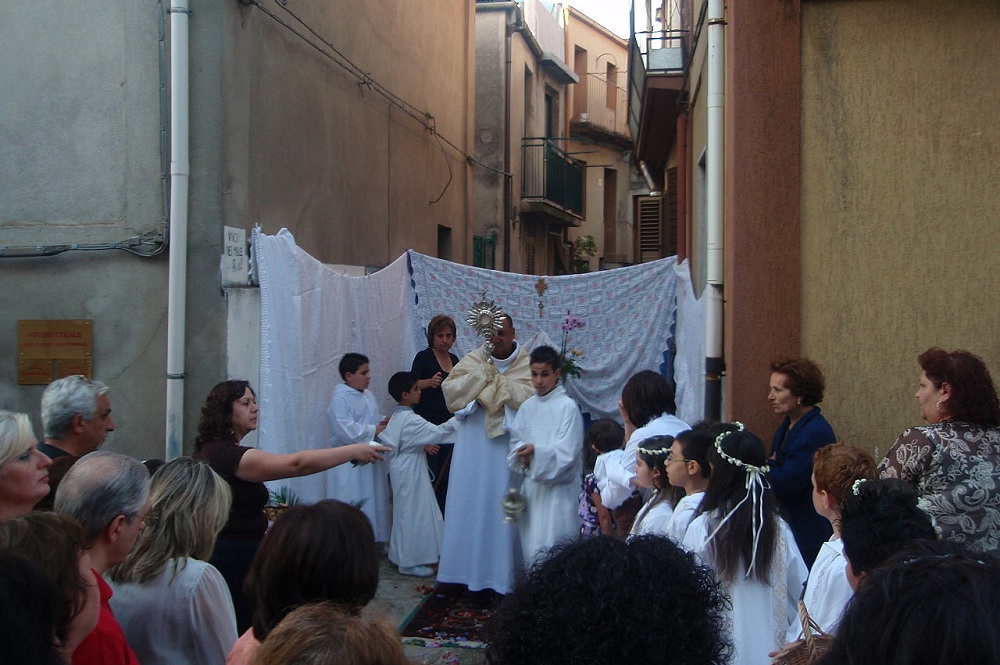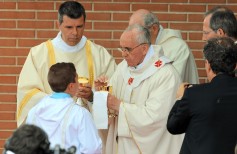The tradition of giving consecrated bread a flat, round shape harks back to the end of the fourth century, in the Orient. After the fifth century, such customs also arrived in the West. We should not think, however, that the hosts made then are similar to those in use today: in fact, they were round-shaped pieces of bread, but a lot denser and bigger than what we know nowadays.
The oldest documented host mould was found in Carthage. It was made of stone and dated back to the sixth century.
Subsequently, the custom of using a larger host for the priest and a smaller one for the faithful spread. These hosts were produced in monasteries. The oldest host mould found in Italy dates back to 1132 and is preserved in the wine museum in Torgiano (Perugia).
From the beginning, host moulds were designed to press a decoration into the host that would highlight its symbolic and sacred value. Immediate recurring themes were the Paschal Lamb, the flagellation, crucifixion and IHS and IHC monograms.
During the Renaissance, the host moulds were often customised with family crests, heraldic symbols, or even the owner’s name or the engraver who had made them. Many high-ranking priests demanded that prestigious goldsmiths and artisans made host moulds. This meant that host moulds became a part of diocese treasures and of the noble families who gravitated around them.
Since the end of the eighteenth century, host moulds underwent a series of significant changes: in terms of their material because cast iron was gradually replaced, in terms of thickness and also in decor creation (from the mould graver). Even decorations slowly changed: symbols and geometric patterns gave way to more complex, truly religious squares.
Today host moulds are non-stick plates with thermostats and saf

